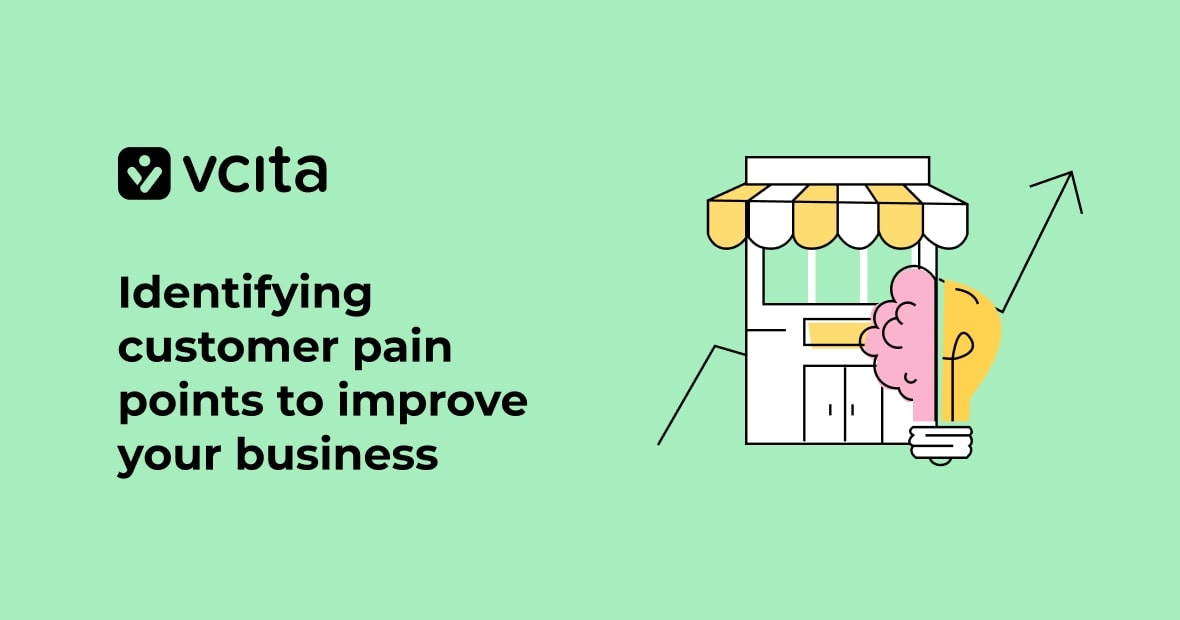You start every day full of energy, hyped up to serve your customers. But what if you’re not seeing many customers or clients, and your work hours tick by without much to do?
Your potential customers might be experiencing pain points in your business, which put them off from buying your products or booking your services. Identifying these customer pain points can totally change your marketing strategy.
Even if you’re usually busy responding to customers and clients every day, it’s vital for you to review your business for customer pain points that could be holding you back from growth. Read on to learn how to conduct qualitative research to uncover what types of pain your customers face, and what to do to address those paint points.
What are customer pain points?
As a small business owner, the key to growth is identifying your customers’ pain points. These are the problems or frustrations your customers experience with your product or service. Understanding these pains is crucial to improving your business and marketing strategy.
Pain points occur when customers struggle with parts of the customer journey that should be seamless. They may face process pain points with inefficient internal processes, support pain points in getting help, or financial pain points regarding pricing or payment.
When you reduce pain points, you’ll likely see higher customer satisfaction, increased loyalty, and more referrals. Your staff will be more productive without spending time handling complaints or confusion, and as customers have an easier experience with your company at every touchpoint, your sales numbers should grow over time.
Common types of customer pain points
Conducting qualitative research, like surveys and interviews, helps you understand the types of pains your customers face. There are several types of customer pain points to look out for:
- Process pain points
Process pain points occur when customers struggle with your internal processes or customer journey. Maybe your checkout process is confusing, the wait time to order is too long, or your return policies aren’t clear.
Look for ways to simplify and streamline operations. For example, a restaurant might introduce online ordering, a plumbing company might add a booking widget to its website, and an ecommerce business might revise its return policies.
- Support pain points
Support pain points refer to any issues with customer service. Maybe it takes a long time for your customers to get through on the phone, or to get a reply from your email customer service desk. If customers can’t get help when they need it or feel unsupported, it damages the customer experience.
Take steps to improve the level of customer support you provide, whether that’s through staff training or adding customer support tools.
- Financial pain points
Financial pains relate to the cost of a product or service. If potential customers feel something is overpriced or they can’t afford it, they won’t buy it. Perhaps your prices are much higher than the competition, or you’re not successfully communicating the value that your product or service provides.
The solution doesn’t always require lowering your prices. Sometimes it’s just a matter of adjusting your product and service descriptions, so that customers understand what they are paying for.
- Product pain points
These pains happen when customers face issues with your actual product or service. Maybe your offering lacks certain features or options that customers want. Or perhaps there are consistent quality or functionality problems.
It can be difficult to identify exactly what aspects of your product or service aren’t meeting your customers’ expectations, but once you know where the issues lie, you can adapt your offering to overcome this pain point.
How to identify your customers’ pain points
You can’t address customer pain points unless you know what they are. The first step to enhancing your customer experience and marketing strategy is always to identify customer pain points. Here are practical steps to take to discover them.
Conduct qualitative research
The best way to uncover pain points is to conduct qualitative research. Monitor social media discussions about your business, read reviews on sites like Yelp or Google, and interview customers to survey them about their experiences. Ask open-ended questions to find out where their frustrations lie.
Pinpoint leading customer pain points
Look for common themes in customer responses to identify the biggest pain points. These are the issues that you want to address first. For example, maybe customers complain about long wait times, confusing billing, or difficulty getting questions answered.
Look for different types of pain
Remember that customers can face different types of pain, including process pain points, support pain points, financial pain points, and product pain points. Keeping these different types of pain points in mind helps you to spot them as you review customer responses.
Strategies for addressing customer pain points
Once you’re aware of customer pain points and you’ve put in the work to identify them, you’re ready to address them. You want to change those aspects of your business that are causing customers pain, so that they’ll be more satisfied and keep coming back.
Address customer pains strategically
The exact steps you take will depend on which type of pain points you identify. For example, you might:
- Review your internal systems and workflows to simplify the customer experience. You may need to redesign parts of your website or app
- Retrain employees or implement new tools and systems, like live chatbots or knowledge bases, to respond faster or more effectively
- Revisit how you explain charges and processes, or rewrite your policies and protocols
- Consider adjusting your pricing or product features to better meet customer needs
- Run promotions and discounts, and make payment plans available for high-cost items
Whatever changes you make, be sure to promote them as part of your marketing strategy.
Turn pains into opportunities
Don’t see customer pain points as negatives—view them as opportunities to strengthen your messaging. Create content on your website, blog, newsletter, and social media that teaches customers how to overcome their pains, or announces how you’ve improved your product and processes. This builds goodwill and turns dissatisfied customers into loyal advocates.
Continuously monitor the customer journey
Customer pain points can change over time. Regularly monitor social media, survey customers, and evaluate feedback to identify new or recurring frustrations. Then make addressing these pains a priority by creating a plan of action and delegating changes to the appropriate teams. Your sales, customer service, product development, and marketing teams should all work together to improve the customer experience.
Reducing customer pain points improves your business
By identifying and addressing customer pain points, you can turn frustrations into opportunities. Continually listening to your customers, evaluating how their needs change, and refining your processes will give you valuable insights to drive improvements, strengthen your customer experience, and boost your success. When you consistently meet customers’ needs, they’ll become loyal fans,and your small business will thrive.





